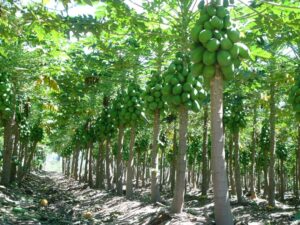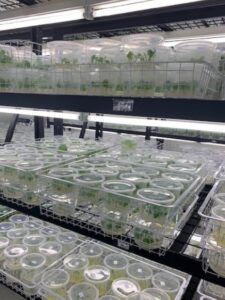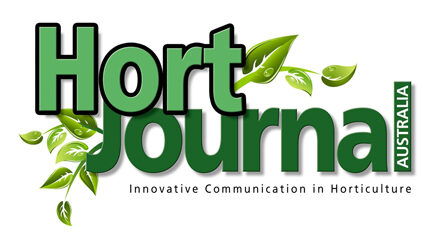
How the R&D Tax Incentive fuels papaya innovation
By Tania Harman and Daniel Knox
For Lecker Farming, a specialist in papaya propagation on Northern Queensland’s Atherton Tablelands, the R&D Tax Incentive is assisting them to continue to drive genetic breakthroughs and set new industry standards.
Lecker Farming, under the stewardship of Gerard Kath, undertakes agricultural research and development activities. After nearly three decades cultivating papayanear Mareeba, Mr Kath has incorporated genetic improvement and propagationprojects into the farm’s operations, creatingacentre for genetic advancement andpropagation excellence.
The farm’s journey into R&D began over a decade ago, with a clear goal: to improve the genetic material of papaya (Carica papaya) crops for better yield, uniformity, and resilience. Central to this mission is Lecker’s advanced tissue culture laboratory, where collaboration with Professor Rod Drew of Griffith University has led to the development of new protocols that reduce contamination and genetic variation, key challenges in plant propagation.

The R&D Tax Incentive (R&DTI) is jointly administered by the Australian Taxation Office (ATO) and the Department of Industry, Science and Resources (DISR). The DISR assists Industry Innovation and Science Australia to register and ensure activities are eligible R&D activities and the ATO is responsible for expenditure claimed in the tax return on eligible R&D activities. The R&DTI is subject to strict eligibility and substantiation requirements and scrutiny by the ATO and DISR. Where these requirements are met, companies may be eligible for a refundable R&D tax offset if its Annual Aggregated Turnover (AAT) is under $20 million, or a non-refundable R&D tax offset if its AAT is equal to or over $20 million.
The R&DTI has played a pivotal role in Lecker enabling these achievements. The R&D Tax offsets received have provided Lecker with additional finances to invest back in research projects. This support has allowed the farm to systematically trial and refine tissue culture techniques, ensuring that each step is documented and meets the program’s rigorous eligibility criteria. Detailed record-keeping and project planning have become integral to Lecker’s operations, not only for compliance but also for driving continuous improvement.
Beyond tissue culture, the R&DTI has encouraged Lecker to explore new frontiers, such as grafting superior papaya cultures onto robust rootstock. The ability to claim R&D expenditure has also enabled Lecker to collaborate with leading academics, invest in new technologies, and share findings with the broader industry.
Lecker’s story demonstrates how the R&DTI can be a catalyst for progress. By accessing government support, Gerard Kath and his team are not only improving their own operations but also contributing to the advancement of horticulture across Australia and the world. The program’s requirements, such as registering activities, maintaining comprehensive records, and demonstrating scientific or technical uncertainty, have helped structure the farm’s research efforts.
As noted, the R&DTI is subject to strict eligibility and substantiation requirements and scrutiny by the ATO and DISR with claimants, for example, to keep thorough and contemporaneous records to demonstrate compliance with the program. Further information on getting these strict eligibility and substantiation requirements correct is available at the ATO (www.ato.gov.au) and DISR (business.gov.au) websites by searching ‘Research and Development Tax Incentive’.
Eligible R&D activities are those that involve systematic experimentation or investigation to generate new knowledge or improve products, processes, or services (tested against current publicly available worldwide knowledge). The activities must address scientific or technical uncertainties and advance industry capabilities. Some examples that may qualify include developing new plant varieties, trialing innovative growing techniques, improving pest and disease management, and designing automated systems or digital technologies to improve propagation efficiency.
To apply for the R&DTI, eligible companies must register their R&D activities with the DISR within 10 months after the end of their income year, before claiming the tax offset through their tax return with the ATO.
If you would like to discuss this further, please reach out to Tania or Daniel (details below).
Tania Harman
Director – R&D Tax and Government Incentives
PwC Australia
M: 0421 051 740
E: tania.harman@au.pwc.com
Daniel Knox
Partner – R&D Tax and Government Incentives
PwC Australia
M: 0438 335 794
E: daniel.knox@au.pwc.com
This content is for general information purposes only and therefore does not constitute financial product advice and should not be relied upon as financial product advice. For financial product advice that takes account of your particular objectives, financial situation or needs, you should consider consultation with professional advisors. This content is based on proposed legislation and may change when the law is enacted.
